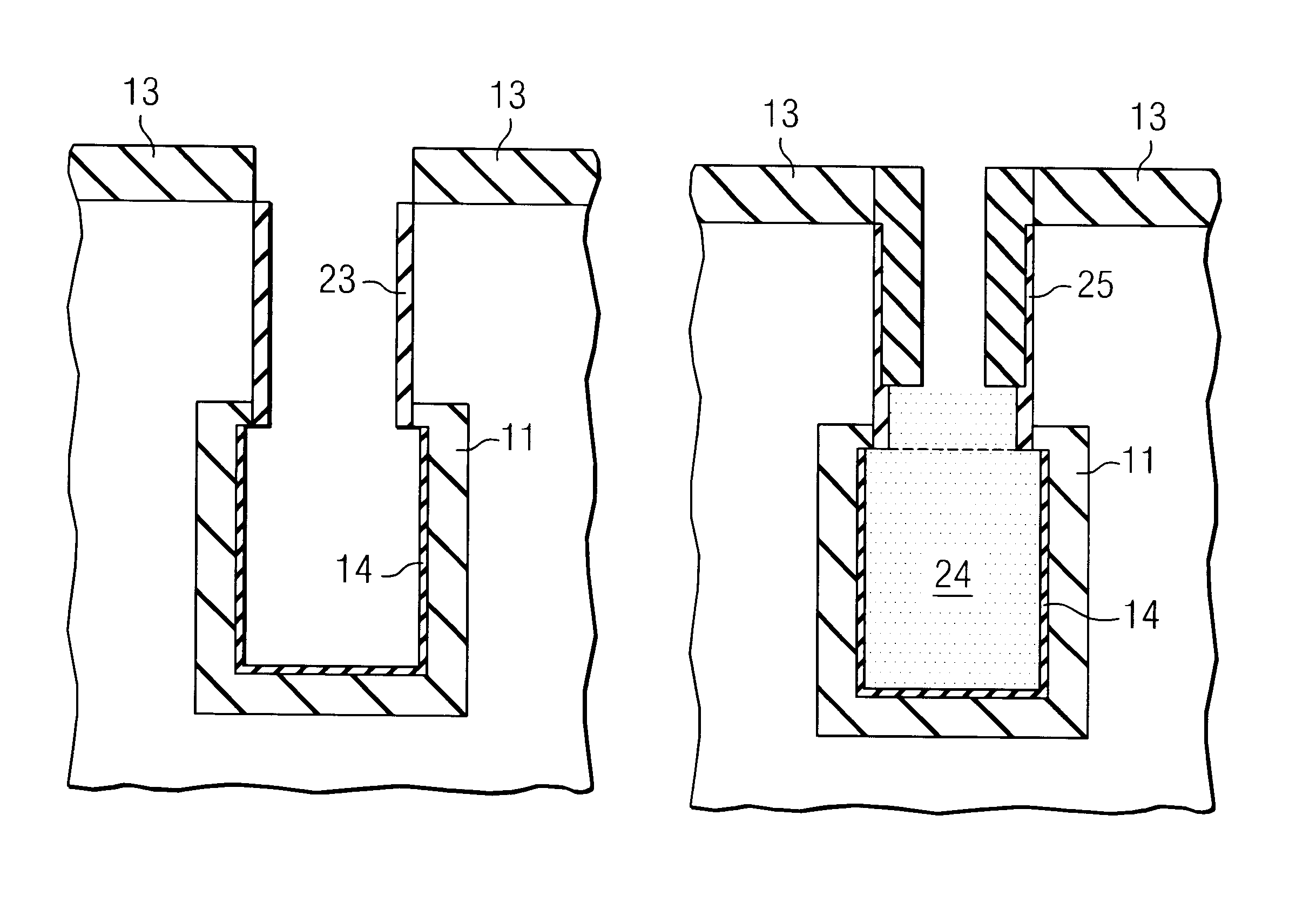Process flow for two-step collar in DRAM preparation
a dram and process flow technology, applied in the field of dynamic random access memories, can solve the problems of not being able to use trench bottle process or self-aligning formation, the process step of forming the buried strap formation complicates the deep trench process, and it is extremely difficult to execute all dt process steps after the collar formation
- Summary
- Abstract
- Description
- Claims
- Application Information
AI Technical Summary
Benefits of technology
Problems solved by technology
Method used
Image
Examples
Embodiment Construction
The present invention describes a process for making a DRAM in which the process results in a full trench opening during trench processing. This full trench opening is especially important when node dielectrics with high dielectric constants are used. These collar layers that result from fuller trench openings allow the use of larger node thicknesses, i.e. 1.5 to 4 fold dielectric thicknesses for the same oxide equivalent thickness.
For example, when considering the capacity of a system consisting of two conducting plates and a dielectric in between, it is governed by the formula: ##EQU1##
Where Cox is the capacity per unit area, c is the dielectric constant, and tox is the thickness of the dielectric layer. Doubling the dielectric constant allows a doubling of the thickness of the layer to obtain the same capacity as previously. The advantage of a larger thickness is the benefit of a low leakage current.
In the context of the invention, a material with a high dielectric constant will ...
PUM
 Login to View More
Login to View More Abstract
Description
Claims
Application Information
 Login to View More
Login to View More - R&D
- Intellectual Property
- Life Sciences
- Materials
- Tech Scout
- Unparalleled Data Quality
- Higher Quality Content
- 60% Fewer Hallucinations
Browse by: Latest US Patents, China's latest patents, Technical Efficacy Thesaurus, Application Domain, Technology Topic, Popular Technical Reports.
© 2025 PatSnap. All rights reserved.Legal|Privacy policy|Modern Slavery Act Transparency Statement|Sitemap|About US| Contact US: help@patsnap.com



